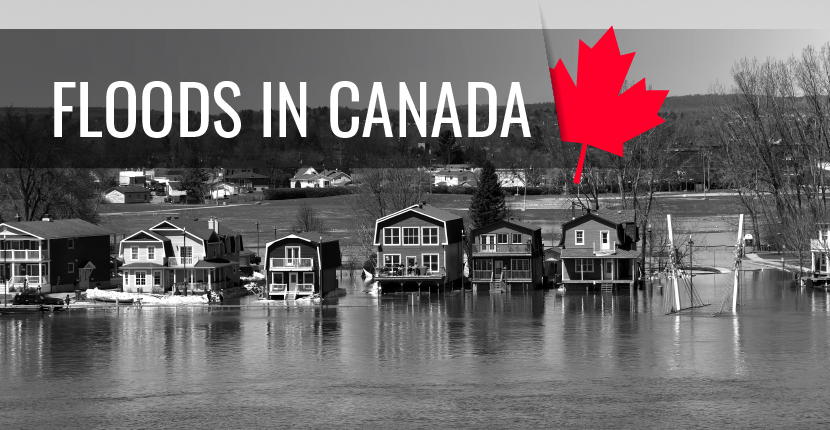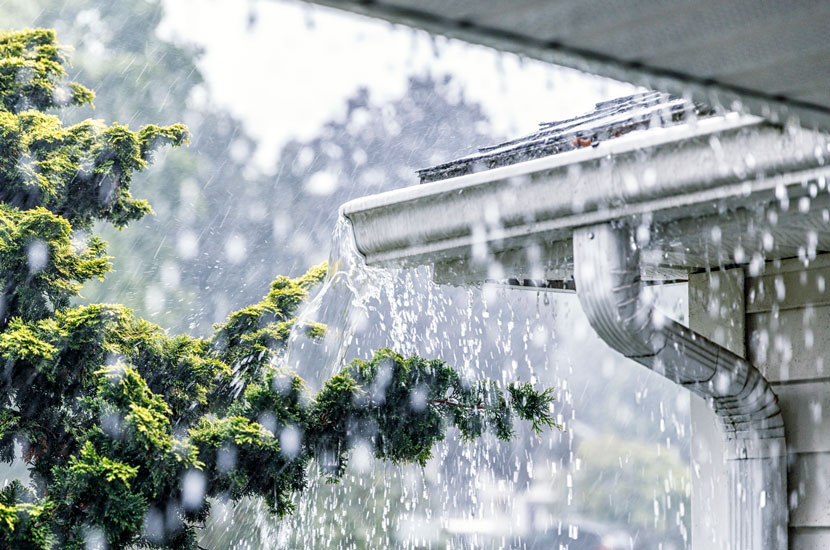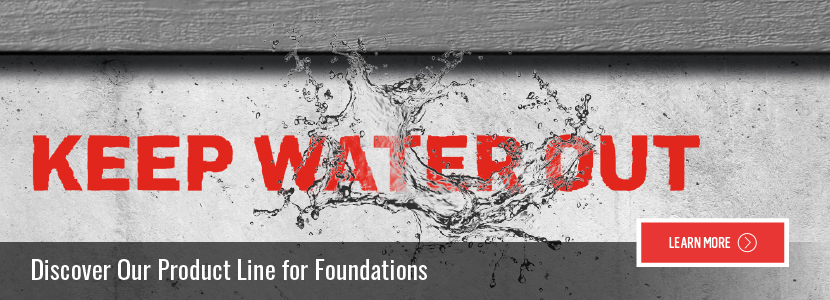Better Understanding Floods in Canada

All over the world, people are potentially exposed to flood risks. Although their intensity and recurrence may vary from year to year and according to the characteristics of the hydric environments in which they occur, floods are often associated with growing costs and concerns, especially for Canadians. Several trends indicate that it is in the interest of homeowners and builders to take this natural disaster into account.
This article explains the economic consequences of floods, their causes in terms of impact of climate change and urban development, the risks for health, as well as the means available to cities and owners to mitigate certain risks associated with this problem.
The Consequences of Floods
Historically, floods have been one of the most recurring and costly natural disasters in Canada. These events affect more and more Canadians, and their costs to society continue to rise.
According to the Insurance Bureau of Canada (IBC), nearly 19% of Canadian homeowners are in a vulnerable situation by being exposed to flood risks [1]. From coast to coast, every province without exception is affected by floods. As a reference, more than 900 communities and 320 zones are considered as flood zone in Canada [2]. Some experts even claim that the number of flood victims is expected to rise from 200,000 people in 2010 to 350,000 people in 2030 [3].
Discover our product line for foundations!
Over a period of 40 years, flood-related costs have quadrupled to about 75% of all disaster financial assistance agreement expenses. More particularly for the sums paid to the insured, the average cost of the floods would amount to $1.8B per year between 2009 and 2017 against $405M per year between 1983 and 2008 [3].
Let us take an example to illustrate this issue in another way. Only for the floods that occurred in southern Alberta and Calgary in the spring of 2013, the overflow of the Bow River, which had been caused by unusually higher rain and spring runoff in the region, caused the evacuation of over 100,000 people and damaged over 3,000 buildings, including the infrastructure [4].

The Causes of Floods
Floods have many causes. For example, precipitation, the hydrological dynamics of catchments, ways of developing the territory and urban environments, the climate, water runoff when snow melts or during heavy rain, flood periods, ice jams, and poor management of dikes and dams are among the many factors causing floods [5]. This enumeration shows just how complex the matter is. What should be remembered is that flood-related risks are unfortunately expected to increase over time due to climate change on the one hand, and urban development on the other, which is not necessarily suitable to take into account the evolution of the risks.
The Impact of Climate Change
The impacts of climate change on temperature, precipitation, and sea levels influence the flood frequency and scale in Canada. Here are a few findings from Canada’s Changing Climate Report [6].
Increasing frequency and intensification of precipitation as well as temperature extremes increase the likelihood of floods and droughts. For example, higher temperatures in the spring increase early flooding associated with snowmelt and ice jams. A significant amount of rain over a short period of time can also cause floods.
Regarding droughts, you should know that drier and more compact soils are less efficient at absorbing water. When extreme precipitation occurs in areas affected by drought, it increases the likelihood of surface runoff, thus increasing the potential for flooding.
Rising sea levels can also increase the frequency of flooding by a factor of four in some coastal areas. These floods generally cause damage to infrastructure and ecosystems. Bank erosion is also an increased risk.
Discover our product line for foundations!
The Impact of Urban Development
Urban development exerts increasing pressure on natural environments and aggravates issues linked to floods. Several issues are involved in this subject, but soil waterproofing and the loss of natural environments are among the commonly discussed ones.
The new infrastructure developed on the territory (such as roads, parking lots, buildings, and residences) generally partially alters or completely eliminates what we call green infrastructure, i.e. natural or semi-natural environments that provide essential services to society, also called ecosystem service. Impacting the services provided by these environments mitigates or even completely eliminates the natural capacity of water collection, retention and filtration. The alteration or elimination of wetlands—the same environments which previously acted as buffer zones to regulate the quantity of water upstream—has the consequence of increasing the extent of flood-prone zones downstream [7]. In other words, the replacement of natural environments upstream contributes to reducing the water regulation capacity, which means that downstream communities must deal with a higher volume of water than before.
Added to this, is the waterproofing of surfaces. These new infrastructures are generally impermeable surfaces, also called mineralized surfaces, such as large asphalt parking lots, concrete foundations and bridges, and stone or brick buildings. The list of examples is long in order to show the dominant presence of mineralized surfaces in urban areas. What should be remembered is that these surfaces have a low capacity to absorb and retain water, which accentuates its runoff during precipitation. In terms of the impact on flooding, the same logic as in the previous paragraph applies. Replacing permeable surfaces made up of plants or wetlands with impermeable surfaces made up of inorganic materials increases the volume of water evacuated into wetlands and hydrous environments [8].


Public Health Risks Related to Flooding
Whether during or after the events, floods pose several risks for the population. For example, these can cause anxiety during evacuation or even cases of carbon monoxide poisoning, food poisoning, mould-related problems, gastroenteritis, hypothermia, electrocution, infection, or skin irritation [9]. Much of the responsibility for preventing these risks lies with government authorities. Anyone potentially exposed to flooding must nevertheless be aware of these risks and take the necessary measures to prevent those that could compromise their health.

Taking Flooding Into Account in Construction
While part of the solution to flooding is to tackle the source of the problem directly, it is possible to consider the risks associated with floods in the way urban areas are developed and buildings constructed. At this level, there are many means to prevent risks and mitigate the scale of floods. This is the case with vegetated solutions for buildings and the improvement of the waterproofing of building foundations. As part of an adaptation approach, these two means help to increase the resilience of communities with regard to climate change.
Discover our product line for foundations!
Vegetative Solutions for Buildings
Whether at the scale of buildings or communities, urban development should not come at the expense of ecosystem service provided by green infrastructure. As part of an urban greening approach, vegetative solutions for buildings allow the increase of collection and retention capacity so as to reduce water runoff.
For example, a standard roof would have a runoff rate of around 81% compared to 40% for a green roof with a 15 cm substrate [10]. Depending on the type of system and thickness of the substrate, the water retention rate can vary from 40% to 50% in winter and from 70% to 100% in summer [11].
Learn more about SOPREMA’s vegetated systems!
Improving Building Waterproofing
For an owner potentially exposed to flooding, it is possible to reduce the risk of water infiltration by focusing on better waterproofing the building, especially at the level of the foundations. To some extent, limiting water infiltration as much as possible is the right thing to do to reduce the risk of mould and prevent damage to materials exposed to water.

Without waterproofing, concrete foundations cannot adequately withstand hydrostatic pressure. This can compromise the durability of the concrete and lead to water infiltration by capillary action. In other words, incorporating the right waterproofing products gives an additional layer of protection to the foundations so that they can better resist hydrostatic pressure. The National Building Code also requires, in the presence of hydrostatic pressure, the installation of a waterproofing material on the foundations.
______
References
[1] Insurance Bureau of Canada [IBC] (2021). Inondations – quelques statistiques.
[2] Environment and Natural Resources Canada (2020). Programme de réduction des dommages causés par les inondations.
[3] Rabson, M. (2020). Le coût des inondations au Canada pourrait tripler d’ici 2030. Le Devoir.
[4] Burton, I. (2015). Inondations au Canada – Inondations historiques dans les Prairies. Canadian Encyclopedia.
[5] Environment and Natural Resources Canada (2013). The Causes of Floods.
[6] Environment and Climate Change Canada (2019). Canada’s Changing Climate Report, Government of Canada, Ottawa, Ontario, 2019, 446 p.
[7] Dupras, J. (2016). L’économie des infrastructures naturelles. Journal of the Ordre des urbanistes du Québec (Québec order of urban planners): Urbanité.
[8] Organisme des bassins versants de la Capitale (2015). Plan directeur de l’eau – Urbanisation, imperméabilisation et ruissellement des eaux de surface.
[9] Centre intégré universitaire de santé et de services sociaux (CIUSSS) de l’Estrie (2016). Changements climatiques : qu’en est-il des risques pour la santé des Estriens? (Information bulletin from the Eastern Townships Public Health Department).
[10] Mentens, J., Raes, D., Hermy, M. (2003). Stormwater Monitoring of Two Ecoroofs in Portland, Oregon, USA (in Proceedings of the First Annual International Green Roofs Conference: Greening Rooftops for Sustainable Communities, Chicago, May 2003). Toronto: The Cardinal Group.
[11] Peck, S.W., Callaghan, C., Kuhn, M.E., Bass, B. (1999). Greenbacks from Greenroofs: Forging a New Industry in Canada. Canada, Ontario, Toronto: Canada Mortgage and Housing Corp.
